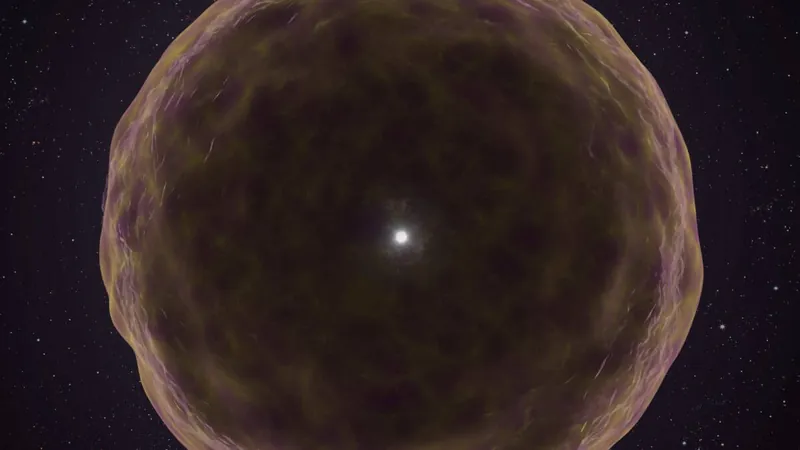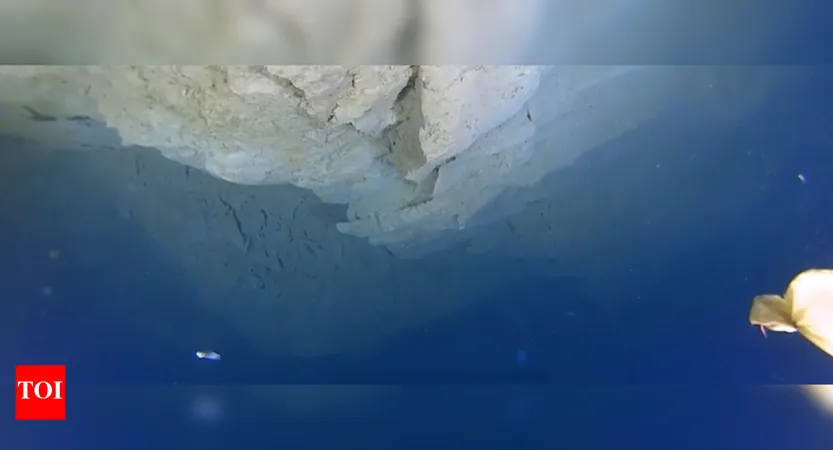
Astronomers Uncover a Stripped Star’s Hidden Heaviness Before Supernova Explosion
2025-08-28
Author: Benjamin
In a groundbreaking discovery, astronomers have unveiled clear evidence of a heavily stripped star that shed its outer layers right before its explosive supernova death. Led by Northwestern University's Steve Schulze, the research team identified spectral signatures of heavy elements typically concealed deep within a star's core.
Stars are born as massive hydrogen spheres, where intense heat and pressure allow atomic nuclei to fuse into heavier elements in a process known as nucleosynthesis. This fusion releases vast amounts of energy, which balances the gravitational forces pressing inward.
As a star ages, it develops an onion-like structure, with hydrogen on the outside and layers of heavier elements like helium and carbon deeper down. Towards the end of its life cycle, the core fuses elements like silicon and sulfur into iron. Unlike lighter elements, iron absorbs energy during fusion, which leads to a catastrophic collapse and results in a stunning supernova.
Though encountering an old star that has expelled its outer layers before the explosion is rare, such instances provide astronomers with invaluable data. When a supernova erupts, the heavier elements hidden in its inner layers manifest in the light spectrum, allowing the team to analyze these compositions. Previously, they've observed elements up to carbon and oxygen, but the latest findings push the boundary further.
In a surprising turn, the Zwicky Transient Facility, under the direction of Avishay Gal-Yam, caught a glimpse of this rare phenomenon in 2021. During a screening for early-stage supernovae, Schulze's team discovered SN 2021yfj, noted for its rapid brightness increase.
Excited by their find, they collaborated with Alex Filippenko’s group at UC Berkeley for a spectral analysis. The results revealed an extraordinary composition unlike any previously documented, dominated by unexpected absorption lines from elements such as silicon, sulfur, and argon.
The team extensively analyzed data from various telescopes, confirming their findings: they had detected a supernova encased in a material shell rich with these elements. Such elements are typically hidden and only surface right before a star meets its end.
"SN 2021yfj illustrates that stars can meet their demise in astonishingly extreme manners, which challenges our established understanding of stellar evolution and death," Schulze emphasized. This remarkable discovery hints that the cosmic puzzle of how stars evolve is far from complete, despite the billions already studied. Going forward, the team hopes to shed more light on the spectacular processes leading to such brilliant celestial endings.









 Brasil (PT)
Brasil (PT)
 Canada (EN)
Canada (EN)
 Chile (ES)
Chile (ES)
 Česko (CS)
Česko (CS)
 대한민국 (KO)
대한민국 (KO)
 España (ES)
España (ES)
 France (FR)
France (FR)
 Hong Kong (EN)
Hong Kong (EN)
 Italia (IT)
Italia (IT)
 日本 (JA)
日本 (JA)
 Magyarország (HU)
Magyarország (HU)
 Norge (NO)
Norge (NO)
 Polska (PL)
Polska (PL)
 Schweiz (DE)
Schweiz (DE)
 Singapore (EN)
Singapore (EN)
 Sverige (SV)
Sverige (SV)
 Suomi (FI)
Suomi (FI)
 Türkiye (TR)
Türkiye (TR)
 الإمارات العربية المتحدة (AR)
الإمارات العربية المتحدة (AR)